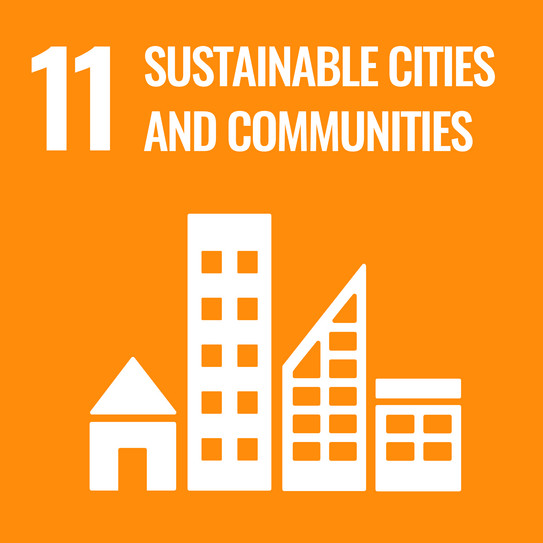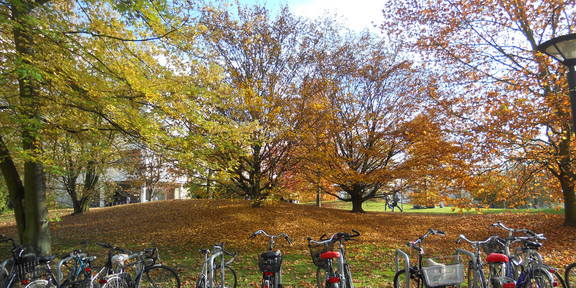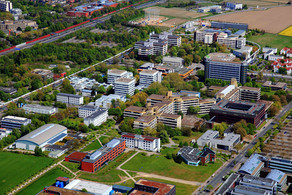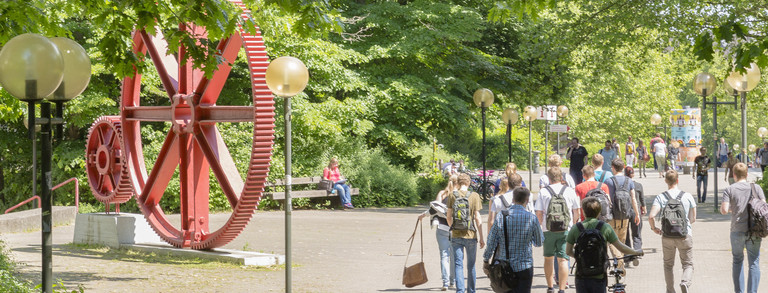Goal 11: Sustainable cities and communities
The goal is divided into several sub-goals. SDG 11 resolves to improve access to safe, affordable housing and transport systems (11.1 + 11.2). Special attention should be paid to older people or people in precarious situations or with disabilities, as well as women and children. Overall, urbanisation should be made more inclusive, planned in a participatory manner and take into account world cultural and natural heritage sites (11.3 + 11.4). Reduce per capita urban pollution, air quality and waste treatment, and significantly reduce deaths and affected people due to disasters (11.5 + 11.6). Promoting access to safe and inclusive green public spaces is a goal (11.7).
At the same time, national and regional development planning should be promoted and social as well as ecological links between urban and rural areas strengthened (11.a). Policies and plans to promote the above measures in cities and settlements are to be increased by 2020 and the aim is to support least developed countries through financial and technical assistance in the construction of sustainable buildings using regional materials (11.b + 11.c).

News on sustainable cities and communities
Stadtradeln 2021
- News
- 3 Gesundheit und Wohlergehen
- 11 Nachhaltige Städte und Gemeinden
- Nachhaltigkeitsbüro

Mitte September nahm Dortmund am Stadtradeln teil. Dabei waren alle Dortmunder:innen über 21 Tage aufgerufen, möglichst viele Alltagswege mit dem Fahrrad zurückzulegen. Der Wettbewerb motiviert Menschen, mehr mit dem Rad zu fahren und so ihre Alltagswege klimafreundlicher zu gestalten.
Insgesamt haben in Dortmund 4471 aktive Radler:innen teilgenommen, etwa doppelt so viele wie im Vorjahr. Gemeinsam legten sie 875.383 km und konnten damit 129 Tonnen CO2 einsparen.
Die TU Dortmund landete auf Platz 1 mit den meisten Kilometer. 401 Radelnde der Universität fuhren in den 3 Wochen 84803 Kilometer. Das Hauptteam der TU mit 188 Radelnden fuhr insgesamt 25228 Kilometer. Im Team der TU waren außerdem 33 Unterteams vertreten.
Die meisten Kilometer radelten die Unterteams Mathematik (8044 Kilometer mit 25 Mitgliedern), Campus for Future (7516 Kilometer mit 43 Mitgliedern) und BCI (4404 Kilometer mit 40 Mitgliedern). Die Unterteams Automation & Robotics und ITMC fuhren die meisten Kilometer pro Kopf mit 386 und 391.
Insgesamt ein starkes Ergebnis, es zeigt, dass die Menschen Lust haben und bereit sind, mehr Wege mit dem Fahrrad zurückzulegen und sich klimafreundlicher zu bewegen.




